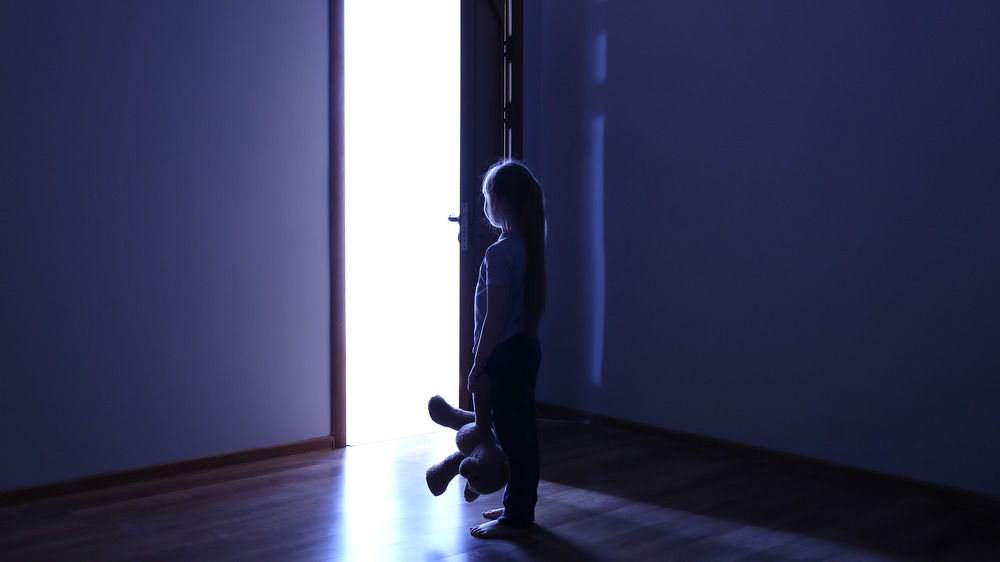Sleepwalking is often depicted in movies and television shows as a person trudging around the house while in a deep sleep, but despite the name, the term sleepwalking can encompass much more than that. It can involve other activities like sitting up in bed, rummaging through the refrigerator, preparing food, and even driving while in a deep sleep, according to the Sleep Foundation.
Sleepwalking, also known as somnambulism, is more common in children than adults, with up to 29 percent of kids having experienced sleepwalking between the ages of two and 13. The prevalence in adults is estimated to be between 1.5 to 4 percent (via Healthline).
Sleepwalking can be dangerous for the sleepwalker and those who live in the same house. Injuries from slips or collisions, misusing sharp objects, or trying to drive a car while sleeping can be life-threatening. As sleepwalkers are in a deep sleep throughout the episode, they will not usually remember the activity.
What causes sleepwalking?

Sleepwalking is thought to occur when a person is partially awoken during non-REM sleep (NREM), also known as deep sleep, in a way that triggers activity. It tends to happen within about an hour or two of falling asleep.
A number of factors can contribute to sleepwalking, including genetics, the use of certain medications, or underlying health conditions (via Mayo Clinic). Family history appears to play a role in the risk of sleepwalking, with the disorder being much more common in people who have a parent who has sleepwalked.
Some medications, including sleeping pills and sedatives, as well as substances like alcohol, can bring on episodes of sleepwalking. Existing health conditions, including obstructive sleep apnea, restless legs syndrome, GERD, migraines, and head injuries can also lead to sleepwalking.
Additionally, sleepwalking can be triggered by sleep deprivation, stress, fever, changes in the environment where you sleep, and sleep interruptions (via Cleveland Clinic).
How is sleepwalking treated?
Treating occasional sleepwalking typically isn’t necessary and most children will outgrow it in their teen years, according to the Mayo Clinic. However, if sleepwalking becomes disruptive or dangerous, treatment is available. This may include addressing underlying health conditions or adjusting medications.
Anticipatory awakenings may be helpful. This is when someone wakes the sleepwalker about 15 minutes before episodes typically occur and they stay awake for several minutes before falling asleep again. Certain medications, including benzodiazepines or antidepressants, may be prescribed to treat sleepwalking as well.
Other tips for avoiding sleepwalking include cutting down on liquids before bed to eliminate the need for bathroom trips. You can also ensure the bedroom is quiet and comfortable to prevent sleep disruptions. Finally, a mental health professional can suggest ways to improve sleep, including meditation, relaxation, stress-reduction techniques, and self-hypnosis.
And of course, remember that most experts advise against waking a sleepwalker in the middle of an episode. This can be jarring and because they aren’t aware of their situation, it can result in confusion, fear, or anger. Rather, try to lightly guide them away from danger and back to bed.